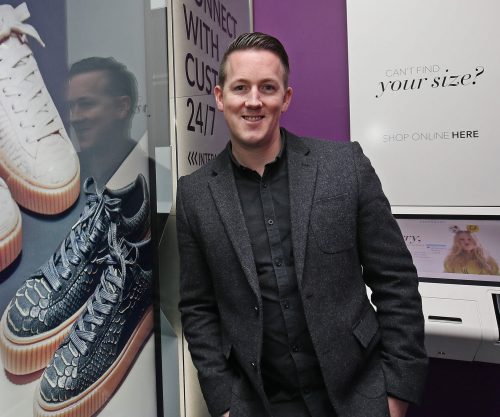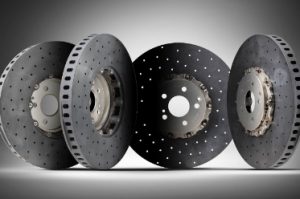Guest Column: RFID – the resurgent tech set to revolutionise retail

By Dean Ward, co-founder and chief technology officer of Evoke Creative, on how the high street could be affected by further hi-tech advances
In a busy festive shopping centre, a millennial dashes into a store, grabs a gift and runs out. No alarms sound. No security guard gives chase.
If retail giant Amazon has its way, that may become a familiar scene on our high streets. The traditionally online marketplace is launching bricks and mortar stores, and trialling bold, innovative technology in the US.
Amazon Go does away with the checkout process altogether. Shoppers simply pick up goods they want, walk out, and have it billed to their online account.
With a patent for the technology filed in the UK, a new weapon may soon be deployed in the battle of clicks v bricks.
It works on a mixture of AI, computer image recognition and sensor technology including radio-frequency identification – RFID, for short.
But it’s the latter of these that’s really revolutionising the way retailers are doing business, and which we’re being increasingly asked to implement by our customers.
In simple terms, RFID works on the basis of electromagnetic tags, attached to goods, which emit signals to remote scanners. It enables easy and rapid location of products.
The technology itself is nothing new. We’ve been implementing it in books for years with Bibliotheca; the global leader in self-service solutions for libraries.
And in retail, it had something of a failure to launch. Just over a decade ago, US-headquartered merchant, Walmart, attempted to roll it out across its supply chain.
But the technology was still in its relative infancy and the cost per tag was too high to make universal adoption practical. The world’s highest grossing company ended up shelving the idea.
High-end fashion brands continued to research and develop RFID, with Burberry being genuine pioneers in it: fitting the technology within the garment label.
The price per tag was less of an issue for luxury goods, especially when offset against the ability to ensure authenticity, and to reduce stock loss and theft.
But fast-forward ten years and the cost per tag has decreased by 90 per cent. They’re as easy to apply as a barcode. A business case that was previously questionable, now holds up.
Brands including Zara, Adidas, and Uniqlo are now fitting the tags at the point of manufacture.
Across the sector, retailers are reporting that stock checks which would normally be labour intensive, and prone to human error, have been transformed by the technology.
Traditionally, 70 per cent stock accuracy levels had been seen as acceptable. With RFID, 98 per cent is becoming the new normal – that’s huge.
For multinational retailers, the ability to track products from factory to shop floor is prized. But perhaps of greater value is the application once products reaches the shelves.
Whereas factories and the supply chain have a degree of predictability, stores do not. Stock levels rapidly-shift due to everything from fickle consumer demand, to variable weather conditions.
RFID enables retailers to check stock at the touch of a button. Ensuring that you have the right product, at the right time, is critical when selling to shoppers who are looking for an instant and convenient service.
It’s even more important for omnichannel retailers, which increasingly sell store stock online, and allow customers to click and collect on the same day.
But while the ROI for stock and the supply chain use is well established, RFID’s potential to enhance the in-store customer experience is what excites us most at Evoke.
We’re working with many of our customers to harness the technology to deliver innovative retail theatre-firsts, using not only hardware, but our proprietary backend software, Connect, to link it all together.
Ceiling mounted RFID scanners – dubbed RAIN RFID – allows real-time monitoring of tagged clothing and footwear around a store. If customers pick up a product we can trigger technical sales information or suggest complementary items.
We can heat map a product around a store: see where it’s moving it to, how long it’s been picked it up for, and, ultimately, if it’s been purchased.
In the changing rooms, we’re linking RFID with interactive mirrors. As customers are trying a product on, the mirror will know what size and product it is, can suggest alternatives and even show what a different size or colour may look like via augmented reality.
This can be fed through to staff tablets, who can then bring alternatives sizes to the customer. It’s a very real example of coworking with AI and technology, to make a process more efficient, and enhance the customer experience.
Over the next 18 months we’ll see more and more retailers adopting RFID.
It’s not always easy to implement and requires a thorough understanding of the technical limitations. Radio waves, for example, are diffused by water and glass, and can’t pass through metal.
But it is a technology that everyone can buy into it: from operations and stock control, to marketing and sales.
New technologies are transforming the way we do business. But it might just be, that it’s a reimagined classic that revolutionises retail.








